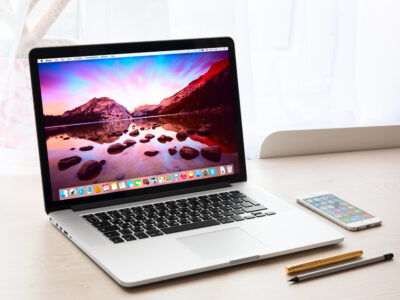
Until recently, the design of the iPhone 5 was a total mystery. Countless talented designers came up with hypothetical iPhone 5 designs, and a few vague rumors from “insiders” circulated endlessly. However, strong evidence for what the iPhone 5 will look and feel like has appeared. Apple may have inadvertently revealed the design of the iPhone 5 in the beta version of its new iCloud Photo Stream service. An icon in the app that is meant to represent an iPhone looks very different from any current iPhone; the screen takes up almost the entire front of the phone. The home button is now rectangular and has been pushed to the very bottom of the device’s front, while the camera and speaker are closer to the top. If the icon is blown up in reasonable proportion to the iPhone 4, the device is more compact overall, but the screen measures 4 inches to the iPhone 4’s 3.5 inches. Based on the new iPhone cases that are being produced in China, where iPhones themselves are also manufactured, the iPhone 5 will also be much thinner than previous iPhones and feature a tapered “teardrop” back similar to the MacBook Air.
Despite the move to a larger screen, it is unlikely that the iPhone 5’s resolution is any higher than it is on the iPhone 4. The density of the iPhone 4’s 960-by-640-pixel “Retina” display is still unparalleled on the smartphone market, and spreading it out a little would still keep it competitive with other high-end smartphones. Also, one of the reasons behind the iPhone 4’s high resolution is that it was exactly twice as large as any previous iPhones’ resolution. This allowed older iPhone apps that restricted themselves to the previous resolution to display in a crisp and natural manner. Apple has stated that it doesn’t want to introduce any slightly different resolutions into the iOS environment, as this would create a burden on user interface developers to support all the different resolutions. Therefore, the iPhone 5 will almost certainly have the same resolution as the iPhone 4.
There is some evidence that the iPhone 5 will use the Apple A5 dual-core processor, which was developed for the iPad 2. This would follow the pattern set by the iPhone 4 and the iPad, in which the iPad received the single-core Apple A4 processor and the iPhone 4 also used it afterwards.
The iPhone 5 will likely feature a number of improvements to the phone part of the equation. Since it will be supported by Sprint as well as AT&T and Verizon, its SIM card will probably have dual network capability, making it a “global” phone. A global phone supports both CDMA networks, such as those used by Verizon and Sprint in the United States, and GSM, which is used by AT&T in the United States. Many countries rely on CDMA, making iPhone access easier for travelers. Additionally, Apple has stated that subsequent iPhones will improve the antenna problems that plagued the iPhone 4.
Zienna Miller believes that the iPhone 5 will blow all other smartphones out of the water. She currently has version 4 which takes exceptional pictures of her new miniature pig pet. Mr. Daniel Hayes, Zienna’s boyfriend, also takes great model pictures of himself with the iPhone.










Comments